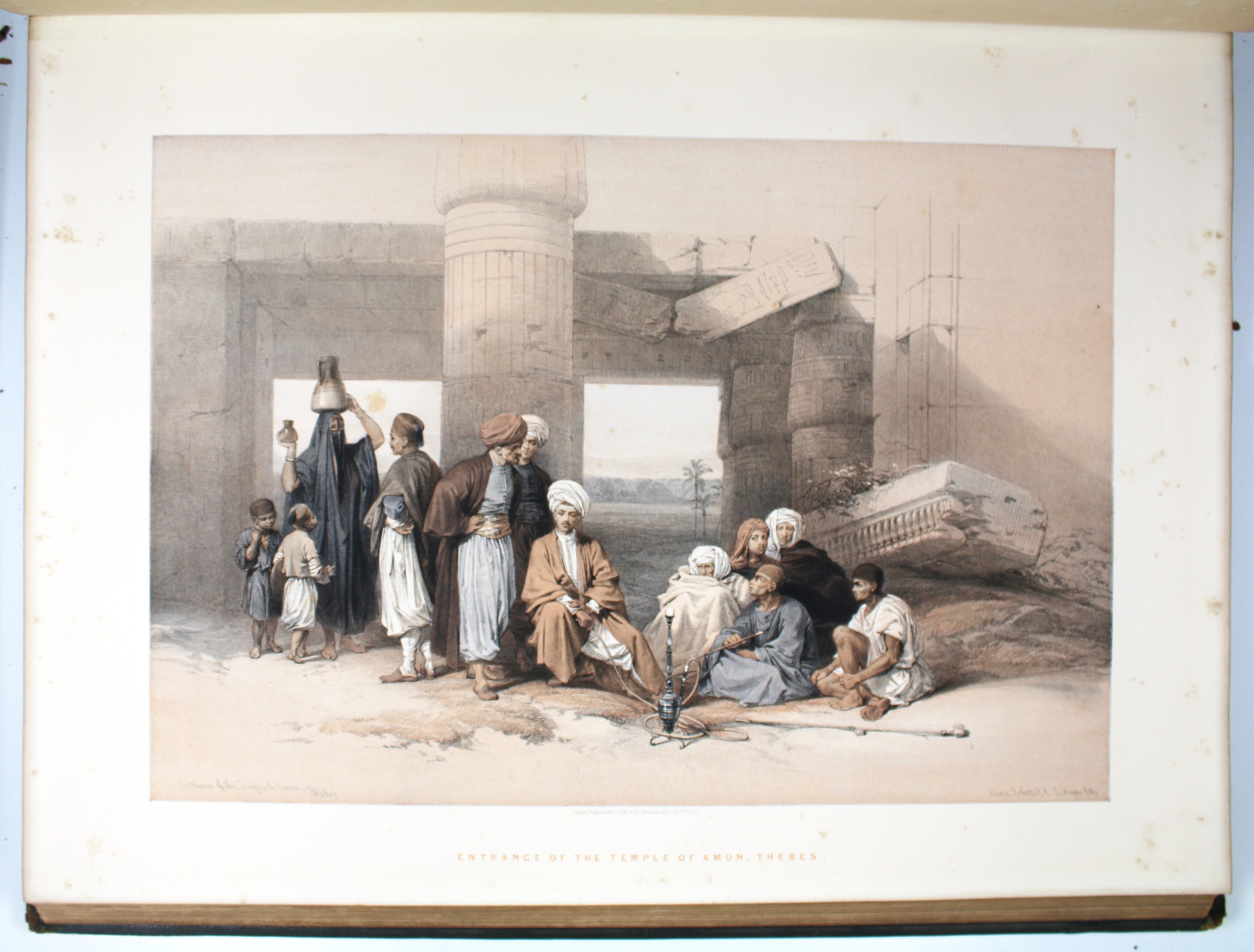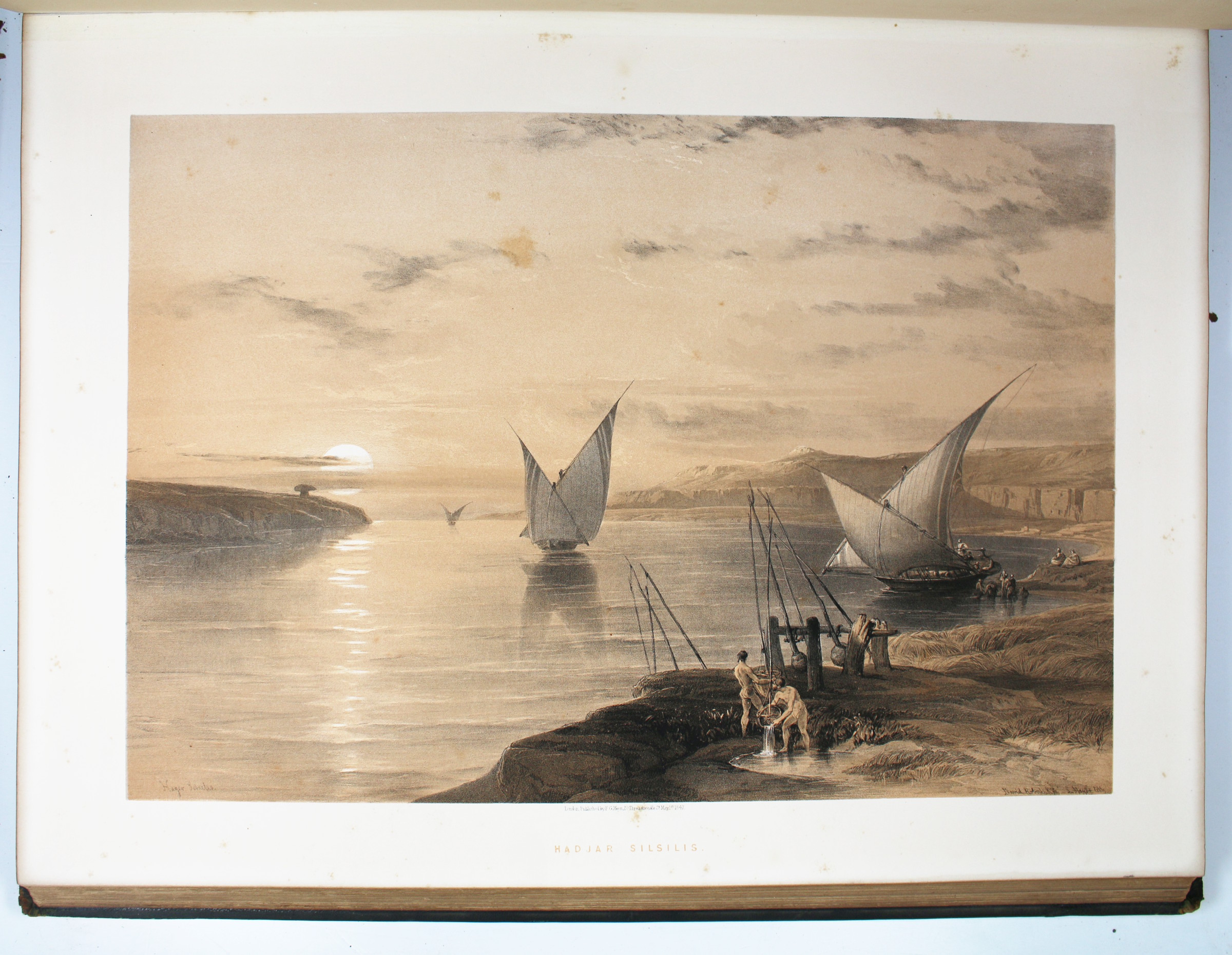Roberts’ classic work on the Middle East
The Holy Land, Syria, Idumea, Arabia [...]. (And:) Egypt & Nubia, from drawings made on the spot [...]. With historical descriptions by William Brockedon.
Large folio (610 x 460 mm). 6 vols. With altogether 6 lithographed titles with pictorial vignettes and 241 tinted lithographed plates, all drawn on stone by Louis Haghe after David Roberts, lithographed portrait of the artist, and 2 engraved maps. Contemporary green half morocco gilt, upper covers with green morocco lettering pieces.
€ 95.000,00
A beautiful set comprising both of Roberts' monumental works on the Middle East in their tinted issues. "One of the most important and elaborate ventures of nineteenth-century publishing and [...] the apotheosis of the tinted lithograph" (Abbey, p. 341), these works were issued in 41 parts over the course of seven years, finely lithographed by Louis Haghe, to whom Roberts paid tribute in glowing terms: "Haghe has not only surpassed himself, but all that has hitherto been done of a similar nature. He has rendered the views in a style clear, simple and unlaboured, with a masterly vigour and boldness which none but a painter like him could have transferred to stone".
In 1838 the topographical artist and stage painter David Roberts (1796-1864) made plans for a journey to the Near East, inspired by his passion for artistic adventure. He departed in August 1839 for Alexandria and spent the remainder of the year in Cairo and visiting the major tombs and sites of Egypt. The following February he journeyed to the Holy Land, making stops in Suez, Mount Sinai and Petra. He spent time in Gaza before entering Jerusalem and concluded his tour by spending several months visiting the biblical sites of the Holy Land. Roberts returned to England at the end of 1839 and submitted his drawings to F. G. Moon in 1840. Moon arranged to bring out a volume of Scripture history, paying Roberts 3,000 pounds for the copyright of the sketches and for overseeing Haghe's efforts. Both the exhibition of his original watercolours and the subsequent published work were an immediate success and confirmed his reputation as an architectural and landscape artist of the highest order.
Armorial bookplate of the clergyman, naturalist and collector William Henry Hawker (1828-74), the first vicar of Steep, Hampshire.
Some spotting and foxing; binding rubbed.
Ibrahim-Hilmy II, 176. Abbey Travel II, 272 & 385. Tooley 402. Lipperheide Ma 27. Tobler 229. Röhricht 1984. Blackmer 1432. Gay 25. Cf. Hiler 753. The Heritage Library, Islamic Treasures, s. v. "Art" (illustration).
































